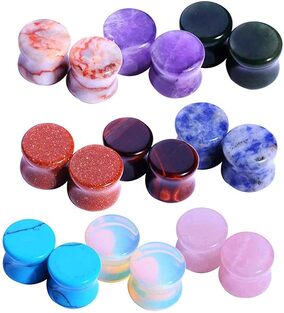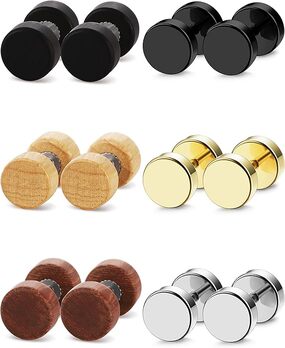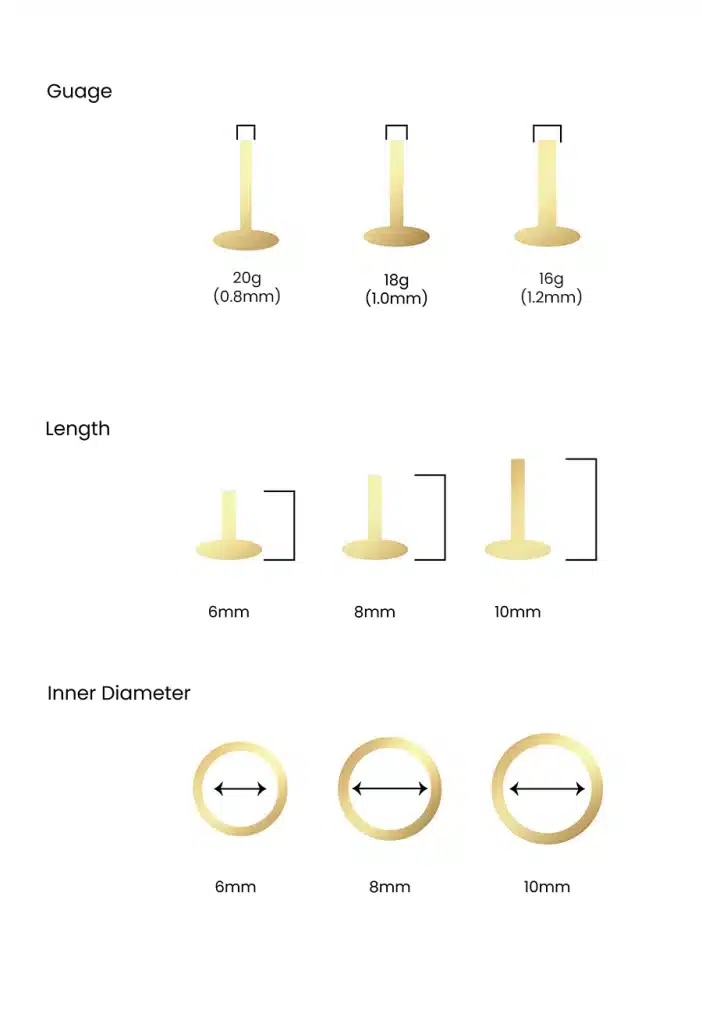Knowing the subtleties of normal earring gauge size is essential for accessorizing our ears with jewelry. Determining the right gauge guarantees comfort and style whether you choose cartilage studs, hoop earrings, or studs. When discussing earring gauge sizes, it’s essential to understand the basics of gauge systems and how they relate to earring thickness. The gauge size indicates the thickness of the earring post or wire, which is especially important for body piercings, stretched lobes, and even standard earrings. Let us explore the world of earring gauges and solve their mysteries. Before going to the guage size lets explore about 7 Best Earrings for Sensitive Ears.
What Does Gauge Size Mean?

Gauge is the term used to describe the thickness of jewelry used in body piercings, such as ear piercings. It’s basically a measurement of the jewelry piece’s diameter. Numbers often represent Gauges, where smaller numbers correspond to thicker jewelry. On the other hand, higher numbers indicate thinner jewelry.
Gauge and Thickness Relationship
The gauge number inversely corresponds to the thickness:
- A higher gauge number (e.g., 20G) means a thinner post.
- A lower gauge number (e.g., 10G) indicates a thicker post.
Common Gauge Sizes
- Standard earrings, typically 20G or 18G (0.8mm or 1.0mm).
Body piercings often range from 16G to 14G (1.2mm to 1.6mm).
Stretched ears, the sizes go below 14G and can reach much thicker sizes like 0G (8mm) or beyond.
BodyJ4You 18PC Body Piercing Stone Plugs

Product Details
- 2 inches Width
- Stone Material
- No Metal Type
- No gemstone
Positions of Piercings and the Related Gauges

Different gauges are needed for different ear piercing locations to guarantee a good fit and minimize discomfort. The conventional gauge size for earrings in earlobe piercings, the most popular ear piercings, is usually 18 or 20 gauge. Most stud earrings fit this size, making insertion simple and preventing undue earlobe stretching.
The gauge size for cartilage piercings, like helix piercings, is typically slightly bigger. Typically, cartilage studs are available in 18 or even 16-gauge to offer stability and durability in the thicker cartilage tissue.
Types of Earrings and the Measurements That Match Them
Many people always wear stud earrings with a thin post that passes through the cartilage or earlobe. While the length of the earring post varies, standard ear piercings usually have a post that is between 8 and 10 mm in length. This measurement guarantees that the earring rests appropriately on the earlobe without being excessively lengthy or short.
On the other hand, many different sizes are available for hoop earrings, and the hoop’s diameter determines the gauge size. Smaller hoops that are everyday wearable often have a gauge size of 20 or 18. However, greater hoop diameters could call for a larger gauge for increased longevity. The convenience and versatility of flat-back earrings have led to their increasing popularity.
FIBO STEEL 6 Pairs Stud Earrings for Men Women

Product Details
- 5 centimeters Length
- Stainless Steel Material
- Stainless Steel Metal
- Push Back
How to Handle All Kinds of Ear Gauges

With so many types of earrings, it’s critical to comprehend the subtle differences in gauge sizes. The right gauge guarantees style and comfort, whether for a standout piece of jewelry or a timeless pair of studs. The gauge size may differ dramatically for body piercings that extend beyond the ears, including nose rings or curved barbells for eyebrow piercings. For example, the typical gauge range for nose rings is 20 to 18. However, some people choose even thicker gauges for a bolder appearance.
Gauge Conversion Chart
| Gauge Size (G) | Millimeters (mm) | Inches |
|---|---|---|
| 20G | 0.8 mm | 0.0315 inches |
| 18G | 1.0 mm | 0.0394 inches |
| 16G | 1.2 mm | 0.0472 inches |
| 14G | 1.6 mm | 0.0625 inches |
| 12G | 2.0 mm | 0.0787 inches |
| 10G | 2.4 mm | 0.0945 inches |
| 8G | 3.2 mm | 0.125 inches |
| 6G | 4.0 mm | 0.157 inches |
| 4G | 5.0 mm | 0.197 inches |
| 2G | 6.0 mm | 0.236 inches |
| 0G | 8.0 mm | 0.315 inches |
| 00G | 9.0-10.0 mm | 0.354-0.394 inches |
This table provides a straightforward way to understand the gauge size and its corresponding thickness in millimeters and inches. Let me know if you need further details or customization.
Conclusion
To sum up, knowing the standard gauge sizes for earrings allows you to choose wisely when it comes to adorning your ears with exquisite jewelry. Whether you want big, statement hoops or tiny studs, getting the ideal gauge will guarantee that your earrings are both fashionable and comfortable.

